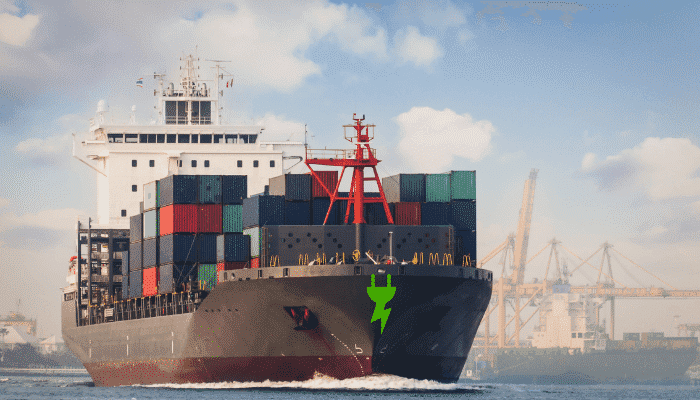

In order to reduce emissions of green house gases from international shipping, the energy efficiency design index (EEDI) has been made compulsory for all new ships. Several steps in the form of new technologies and efficient design features have already been taken to ensure that the energy efficiency design index (EEDI) is met.
Technically, the job under this endeavor is to achieve “greener” ships through appropriate ship design and operational measures. Reduction in fuel consumption and carbon emissions by using alternative fuels such as LPG is one of the many ways to achieve the ultimate green ship.
Moreover, it’s a difficult task to use new technologies efficiently and safely to achieve the desired objectives. Solar and wind power are renewable resources which have been harnessed and utilized efficiently in projects such as Skysails and Eco Marine Power’s wind-solar ship. Such efforts are laudable!


The reduction of fuel consumption through imaginative passage planning should engage attention of management level officers on board ships. Passage planning or continuous route review (also to check that autopilot is not functioning erratically) is an important exercise that should be carried out throughout the voyage. Reduction in speed under governor control during the period when there are head winds and adverse currents/swell is the single most important thing that must always be done by every ship. It has been noted several times that officers are not careful about this and actions are taken only when the propeller comes out of the water and the main engine trips on high speed.
Another most important thing that officers must do is operate the generator engines on maximum possible load (Let’s say 75%) for all round benefit. On many occasions, a second generator is started on the request of the duty officer to achieve a certain purpose, but not stopped in time due to lack of involvement of concerned parties or lack of communication. Thus it can be said that a good team work can help to save a lot of energy on ship.
A lot of study is also being conducted to improve the hull form and propeller efficiency. Some studies were done in the past on forward side of the vessel and improvements were incorporated, but now, as one example, single propeller twin-rudder system is sought to be used on larger ocean going vessels, though, of course, several systems are already in use for the same purpose on coastal vessels for quite some years.
[the_ad id=’173168′]
A synthesis of CAD and computational fluid dynamics (CFD) is presently being attempted to achieve an efficient ship design, which might prove beneficial. Until some years ago when EEDI was not a prime concern, many ships were built in countries such as china due to heavy economic advantage of certain off-the-shelf standard design. But now it is a welcome sign that ship design after hydrodynamic analysis of hull form is being taken up for economic and academic betterment.
Hull cleaning and paint technology to reduce resistance are areas that needs to be further explored to increase the overall efficiency of the ships.
Systems have been developed to achieve optimum trim. We should always be mindful that the vessel is not underway in a head down condition, say, consequent to consumption of fuel from the aft tanks.
Efficient operation of deck cranes also assist in energy conservation. Good oil quality, proper adjustment of brakes, efficient greasing of pulleys, and negligible backlash in turn table gearings ensure that the motor is drawing correct current. In ports, it should be seen that the boiler steam stop valve is throttled and steam is opened only when it is necessary. For example, steam need not be kept open in all the bunker tanks. Boiler smoke side cleaning is often neglected, resulting into excessive consumption of fuel and release of sooty exhaust.
The garbage disposal method has been successful only up to certain level as at several places only “convenient” garbage is accepted. On all ships scavenge under piston space is cleaned and scrapings are collected, but no one accepts this material. If this is burnt in the incinerator, soot would be produced (normal sludge burning does not produce too much smoke), which ultimately defeats the purpose of reducing emissions. Moreover repeated handling of the shovel (It is a very slow process requiring several feeds) spoils the refractory are well.
Greater co-operation from ports is solicited because are several port operations needs to go green. Also, technology such as Cold Ironing should be implemented on ports.
Ports are not only for making money on berth charges, crane charges, tug charges but also for assisting vessels to carry out maintenance by granting immobilization as far as practicable . It is to note that when the ship berth’s only the agent comes to the ship whereas no port officer offers any assistance. Proper cooperation between the ship and the port can work wonders towards reducing air pollution from the shipping industry.










We believe that knowledge is power, and we’re committed to empowering our readers with the information and resources they need to succeed in the merchant navy industry.
Whether you’re looking for advice on career planning, news and analysis, or just want to connect with other aspiring merchant navy applicants, The Marine Learners is the place to be.